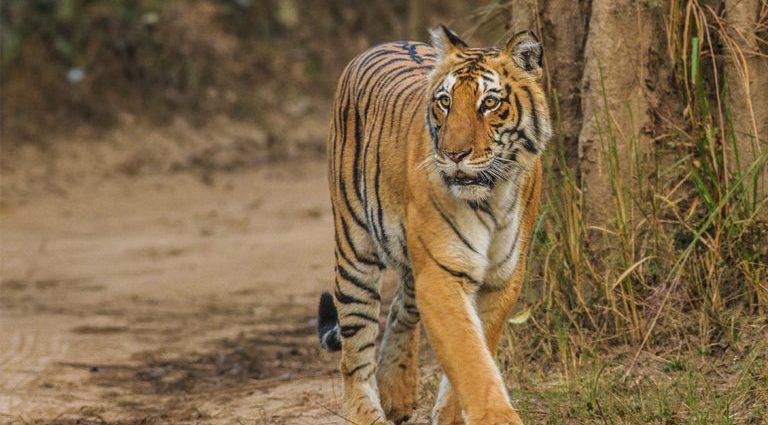A national park is a large area of land which is protected by the government because of its natural beauty, plants, or animals, and which the public can usually visit. It is an area of countryside for public use designated by a national government as being of notable scenic, environmental, or historical importance. National Parks – An Easy Walk For Nature
Rules for visiting a national park
| Rule | Reason why |
| Keep pets at home. | Pets can scare or kill native animals. |
| Take all your rubbish home. | Rubbish causes damage to the environment. |
| Leave plants, animals, rocks, shells and soil as you find them. | Disturbing these things puts the lives of animals and plants at risk and ruins their habitats. |
| Vehicles must stay on roads. | Vehicles cause damage to plants and animals and increase erosion. |
| Ride your mountain bike on roads but not on tracks. | Riding on walking tracks can injure walkers and damage the track. |
| Tread lightly – keep on the track. | You won’t damage plants and animals when walking on the track. |
| Do not pick flowers. | Flowers are food for insects and birds, and they make seeds from which new plants grow. |
| Use toilet facilities, not the bush. | This keeps damage to plants and the soil to a minimum. |
| Do not touch or walk on historic sites or Aboriginal sites. | These sites are easily damaged by humans. |
Staying safe in national parks
• When bush walking, tell someone where you are going.
• Take food and water, warm clothing and a raincoat.
• Do not go alone.
• Be careful when walking on rocks at the sea edge.
• Put on sunscreen and a hat.
• Stay behind safety fences.
• Before swimming check the depth, temperature and current.
List of famous national parks in the world
- Grand Canyon National Park (USA): It’s big– 277 miles long, 18 miles wide, a mile deep– encompassing over 1900 square miles. Considered one of the 7 Natural Wonders of the World. In addition to wildlife such as Black Bear, Elk and California Condors, the canyon has historically been home to the Pueblo people, who consider it a sacred site.
- Great Barrier Reef National Park (Australia): Great Barrier Reef is actually composed of over 2,900 individual reefs and 900 islands stretched out across an area of around 133,000 square miles. Located in the Coral Sea off the coast of Queensland, it’s home to 30 species of cetaceans, over 1,500 species of fish, six species of sea turtles, and around 125 species of sharks and stingrays.
- Jim Corbett National Park (India): Located in the sub-Himalayan state of Uttarakhand, the park’s 201 square miles includes diverse landscapes such as hills, rivers, marsh, grassland and a lake, with elevations ranging from 1,300 to 4,000 feet. Dense forest covers nearly 75% of the park, with 110 types of tree, 50 species of mammals, 580 bird species and 25 reptile species.
- Kruger National Park (South Africa): South Africa’s oldest national park (est. 1926) is home to an exceptional array of animals, including 517 bird species, 147 species of large mammals, 114 reptile species, and plenty of rare wonders (including Black Rhinos and the gorgeous, but Critically Endangered, African Wild Dog).
- Manú National Park (Peru): The biosphere reserve, which was named a UNESCO World Heritage Site in 1987, contains over 1000 different species of birds (from Andean Cock-of-the-Rock and Hoatzin to Macaws and Spix’s Guan).
- Tarangire National Park (Tanzania): The park has a number of unique features, including massive Baobab trees, massive termite mounds that often serve as home to dark mongooses, and the famous tree-climbing lions. It’s also a major draw for bird-watchers, as the swamps on Tarangire attract one of the world’s most stunning arrays of breeding birds (over 550 species).
- Tikal National Park (Guatemala): The only national park on this list that’s more focused on history and culture than nature and wildlife, Tikal is one of the largest archaeological sites of pre-Columbian Maya civilization. Located in a rainforest in northern Guatemala, it was declared a UNESCO World Heritage Site in 1979.
- Torres del Paine National Park (Chile): Its attractions are many. There’s the blue icebergs of Lago Grey that break off from Grey Glacier, part of the Southern Patagonian Ice Field (the world’s second largest contiguous ice field outside of the poles). There’s wildlife such as Foxes, Huemul Deer, Guanacos, Pumas and the massive Andean Condor. There is the archaeological history of the Milodon Caves, and ancient wall art along the Fauna Trail.
Also Read : https://www.birdsviewinfo.com/who-is-my-best-friend/

